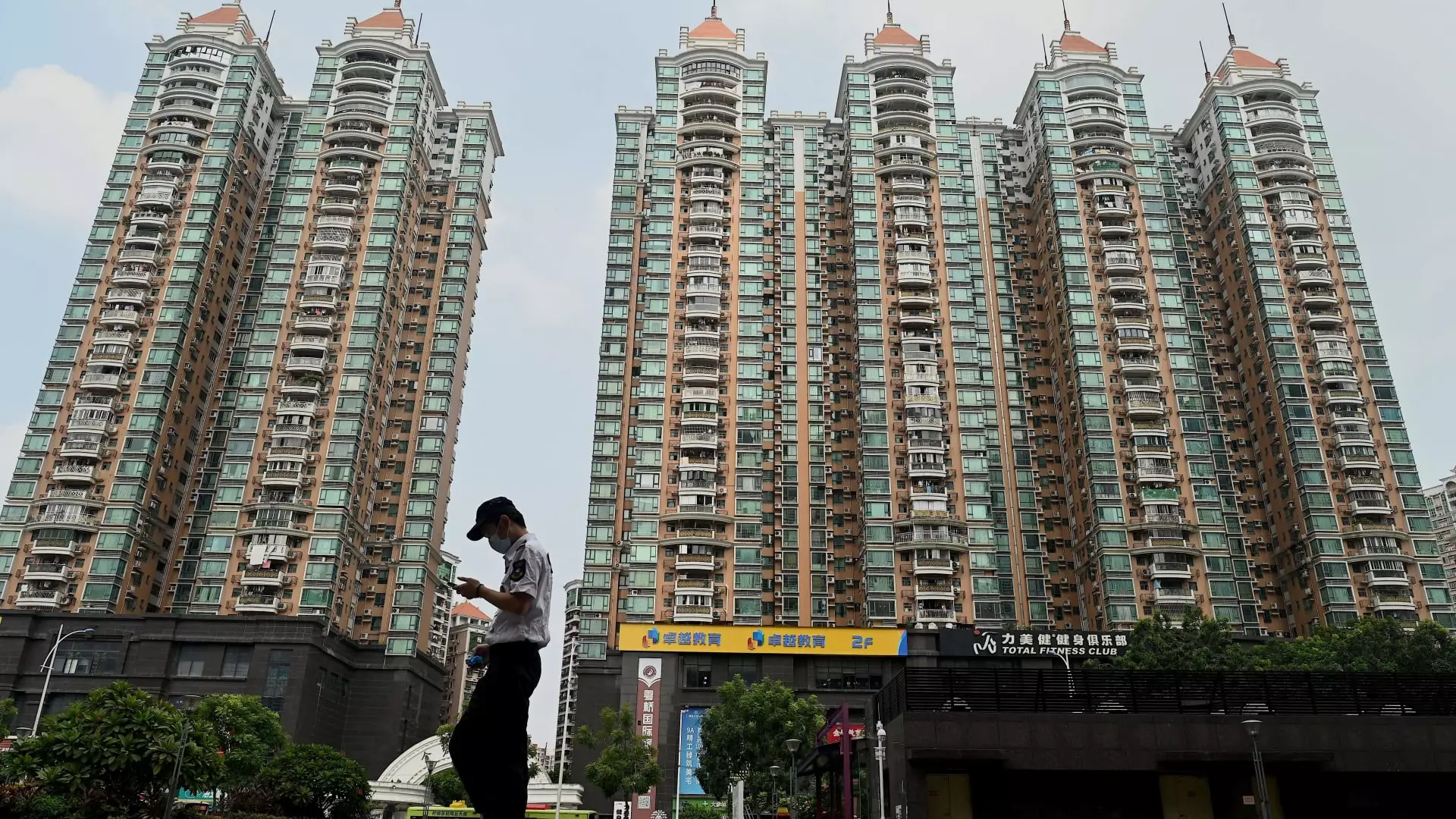The financial landscape of Chinese property developers saw a significant rally recently, driven largely by proactive measures announced by key cities in mainland China aimed at revitalizing homebuyer sentiment. This development comes in the wake of a series of policy stimuli from the central bank, which have aimed to reinvigorate a sector grappling with sluggish sales and a protracted downturn. The Guangzhou city government’s announcement to lift all restrictions on home purchases marked a pivotal moment, signaling a shift in approach designed to lure buyers back into the market.
Previously, the home purchase process had been encumbered with regulations, particularly for migrant families and single individuals. The Guangzhou reform removed barriers that mandated migrants to demonstrate a tax or social insurance history of six months to acquire multiple properties. Now, these families can buy up to two homes, eliminating the earlier limitations. Similarly, the Shanghai government has slashed the minimum required tax-paying period for potential buyers from three years to one year, alongside reducing down-payment requirements for first-time and subsequent home purchases. These measures reflect a broader trend across major cities, including Shenzhen, which has also relaxed purchasing restrictions.
As a direct reaction to these favorable announcements, the Hang Seng Mainland Properties Index surged by over 8% on the first trading day following the news. Major Hong Kong-listed real estate entities, such as Longfor Group Holdings and Hang Lung Properties, demonstrated notable gains, suggesting renewed market confidence. Such spikes in stock prices can be correlated with heightened optimism about future sales and the overall stability of the property market, echoing sentiments from analysts who view easing restrictions as potentially transformative for first-tier cities like Beijing, Shanghai, and Guangzhou.
This relayed enthusiasm is crucial as the sector has historically been a major contributor to China’s GDP. However, a relentless slump since the central government’s crackdown on excessive debt within the real estate sector in 2020 has represented a significant challenge. Despite the recent surge in share prices and the hope these new guidelines provide, skepticism lingers among economists who caution that the true impact of such measures may vary across different regions.
The prevailing sentiment among economists captures a cautious optimism. Experts like Allen Feng from Rhodium Group highlight the regional disparities, indicating that while first-tier cities might witness pronounced economic benefits from the new rules, secondary and tertiary cities could face a different reality. Gary Ng, an economist with Natixis, points out that the elevated inventory levels in smaller cities may temper the effects of these easing measures, leading to stabilization rather than an outright recovery.
Furthermore, it is crucial to underline the context of these changes. The Chinese government has recognized an urgent need to curtail the alarming property market decline that has persisted for years. The People’s Bank of China’s recent actions to lower mortgage rates and down-payment ratios signify a concerted effort to alleviate household financial burdens. Past measures, however, have not catalyzed a needed revival, prompting calls for increased urgency and expanded initiatives to address the challenges plaguing the construction and real estate sectors.
Looking ahead, Erica Tay from Maybank Investment Banking Group emphasizes the necessity for the government to expedite the completion of stalled property projects. Only a small percentage of construction is currently yielding results—a situation that must be rectified to restore confidence among would-be buyers. By successfully completing existing projects, authorities could create renewed demand and demonstrate a concrete commitment to stabilizing the sector.
While calculating whether these newly implemented relief measures will provide the necessary momentum to shift the market into a positive trajectory remains uncertain, it’s evident that the Chinese property market is at a critical junction. Stakeholders, ranging from policymakers to investors, will be watching closely to assess whether these strategies can effectively bridge the existing divide between supply and demand. As China grapples with the complexities of its property landscape, one thing remains clear: the path to revitalization will require persistent efforts and innovative approaches to resurrection.

Leave a Reply